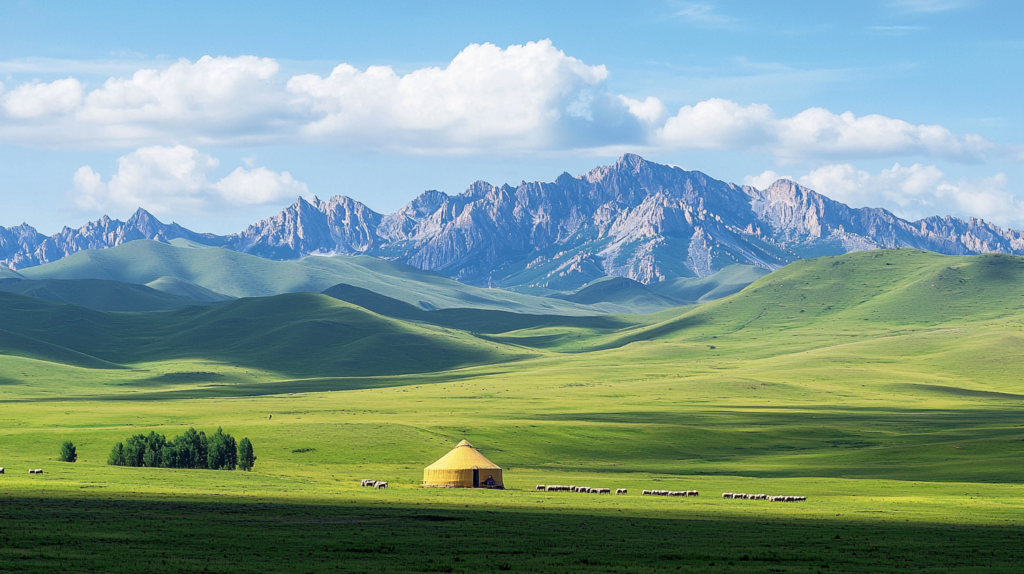
Kyrgyzstan is a country with unique geographic and cultural diversity. Each region has its own characteristics, reflecting its history, nature, and traditions. Here’s a brief overview of each region of Kyrgyzstan and what sets them apart:
1. Chuy Region
- Features: Located in the northern part of the country, in the Chuy River Valley, this economically developed region includes Kyrgyzstan’s capital, Bishkek. The Chuy Valley is a key agricultural area, producing grains, fruits, and vegetables. It is also a hub for trade and industry, making it the most urbanized region in Kyrgyzstan.
- Distinctions: Chuy Region is the economic heart of Kyrgyzstan, hosting many administrative and business structures. It is home to the country’s main international airport (in Bishkek) and major transport routes connecting Kyrgyzstan to neighboring countries.
2. Talas Region
- Features: Located in western Kyrgyzstan, Talas is known for its picturesque landscapes and cultural heritage. The region has a rich history, playing a crucial role in the Kyrgyz nation’s past. Its agricultural lands produce potatoes, grains, and vegetables.
- Distinctions: Talas is renowned for its historical legacy, with numerous historical monuments, including tombs and archaeological sites related to ancient Turkic and Kyrgyz empires. It is considered the cradle of the Kyrgyz people, attracting tourists eager to explore its culture and history.
3. Naryn Region
- Features: Situated in central Kyrgyzstan in the Tien Shan mountains, Naryn is a high-altitude region with harsh climatic conditions and limited agricultural productivity. It is a hub for nomadic traditions, where shepherds and nomads continue to preserve their way of life.
- Distinctions: Naryn is the heart of Kyrgyz nomadism. Unlike other regions with predominantly settled populations, it strongly reflects nomadic culture. The region also attracts mountain tourism enthusiasts with its stunning natural beauty and opportunities for trekking and climbing.
4. Osh Region
- Features: Located in the south, Osh Region centers around the city of Osh, the second-largest city in Kyrgyzstan. This area is known for its multiethnic population, including Uzbeks, Kyrgyz, and other ethnic groups. It is one of the key agricultural regions, producing cotton, fruits, and vegetables.
- Distinctions: Osh Region stands out for its ethnic diversity and historical significance. The city of Osh, one of the oldest in the country, serves as a cultural and trade hub. Its developed infrastructure and proximity to Uzbekistan foster cultural and economic exchanges.
5. Issyk-Kul Region
- Features: Situated around the famous Issyk-Kul Lake, this region is Kyrgyzstan’s tourism hub. Issyk-Kul, one of the largest saline lakes in the world, attracts thousands of tourists in summer with its beaches and resorts. The region is also an important agricultural center, producing fruits, vegetables, and grains.
- Distinctions: Issyk-Kul Region is unique for its recreational potential. Unlike other regions, it focuses on tourism, hosting numerous resorts, health spas, and campsites. It is a destination for both locals and international tourists seeking nature, sports, and cultural events.
6. Jalal-Abad Region
- Features: Located in southwestern Kyrgyzstan, Jalal-Abad is a key agricultural region, producing fruits, vegetables, grains, and tobacco. It is also famous for its thermal springs and natural resorts.
- Distinctions: Jalal-Abad stands out for its numerous hot springs and mountain resorts. Its strategic location near the borders with Uzbekistan and Tajikistan creates unique cultural and economic ties with neighboring countries.
7. Batken Region
- Features: Situated in the southwest near the borders of Uzbekistan and Tajikistan, Batken is a sparsely populated and underdeveloped region with low urbanization levels. It is known for its natural riches, including rare flora and fauna.
- Distinctions: Batken is marked by its remoteness and border location. While it faces geopolitical challenges, it also attracts ecologists and researchers with its pristine nature and preserved traditions.
Conclusion:
Each region of Kyrgyzstan has unique features tied to its nature, culture, and history. Chuy Region is the trade and urbanization hub, Talas boasts historical heritage, Naryn symbolizes nomadism, Osh highlights multiculturalism and agriculture, Issyk-Kul is the tourism center, and Jalal-Abad and Batken offer natural wealth and geopolitical importance. Together, these regions showcase the richness and diversity of Kyrgyzstan, where every corner has its own value and uniqueness.
